As a business owner, understanding and mastering the intricacies of customer acquisition is paramount to ensuring sustained growth and success in the ever-evolving landscape of the marketplace. In today’s dynamic business environment, where consumer behaviors and preferences are constantly shifting, adopting and leveraging effective customer acquisition tools is not just beneficial but often necessary for maintaining a competitive edge.
Benefits of Customer Acquisition Tools:
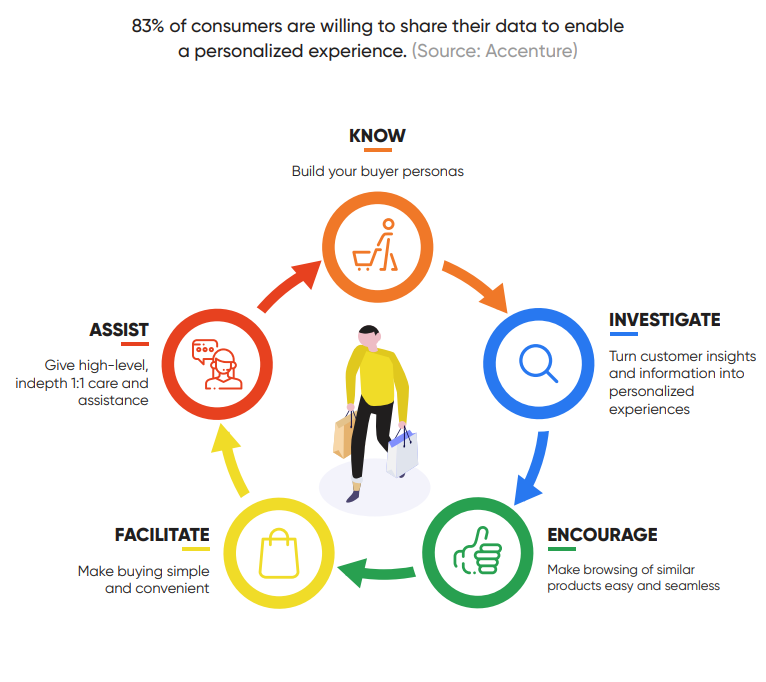
- Precision in Targeting: Customer acquisition tools enable businesses to precisely target their desired audience. This level of precision is crucial in optimizing marketing efforts and resources. By utilizing data analytics and customer segmentation tools, businesses can identify and focus on specific demographics, interests, or behaviors that are most likely to convert into loyal customers. This ensures that marketing campaigns resonate with the right audience, increasing the chances of successful customer acquisition.
- Enhanced Social Media Relationships: In today’s digital age, social media platforms are integral to customer acquisition strategies. Customer acquisition tools provide businesses with the means to build stronger relationships with their audience on these platforms. Direct engagement through social media channels allows businesses to interact with potential customers in real-time, respond to inquiries, and address concerns promptly. This personalized interaction fosters a sense of connection and trust, influencing potential customers to choose your brand over competitors.
- Performance Tracking: One of the key advantages of customer acquisition tools is their ability to track and analyze the performance of marketing campaigns. These tools offer in-depth insights into the effectiveness of various strategies, channels, and messages. Businesses can track key performance indicators (KPIs) such as conversion rates, click-through rates, and customer acquisition costs. This data-driven approach empowers businesses to make informed decisions, identify successful tactics, and refine or reallocate resources to optimize overall campaign performance.
- Data-Driven Decision Making: Customer acquisition tools provide businesses with valuable data that can inform strategic decision-making. By analyzing customer behavior, preferences, and engagement patterns, businesses can tailor their marketing strategies to align with the needs and expectations of their target audience. This data-driven approach ensures that marketing efforts are not only effective but also adaptable to changing market dynamics and consumer behaviors.
- Personalization and Customization: Customer acquisition tools facilitate personalized and customized marketing campaigns. By understanding individual customer preferences and behaviors, businesses can deliver targeted messages, offers, and content. This level of personalization enhances the customer experience, making potential customers feel valued and understood. Tailoring marketing efforts to specific segments of the audience increases the likelihood of capturing their attention and driving conversion.
- Cost Efficiency: Effective use of customer acquisition tools can lead to cost efficiency in marketing. By precisely targeting the right audience and continuously optimizing campaigns based on performance data, businesses can reduce unnecessary expenditures on ineffective strategies. This cost-conscious approach maximizes the return on investment (ROI) for customer acquisition efforts.
Top Customer Acquisition Tools of 2024:
1. Popupsmart:
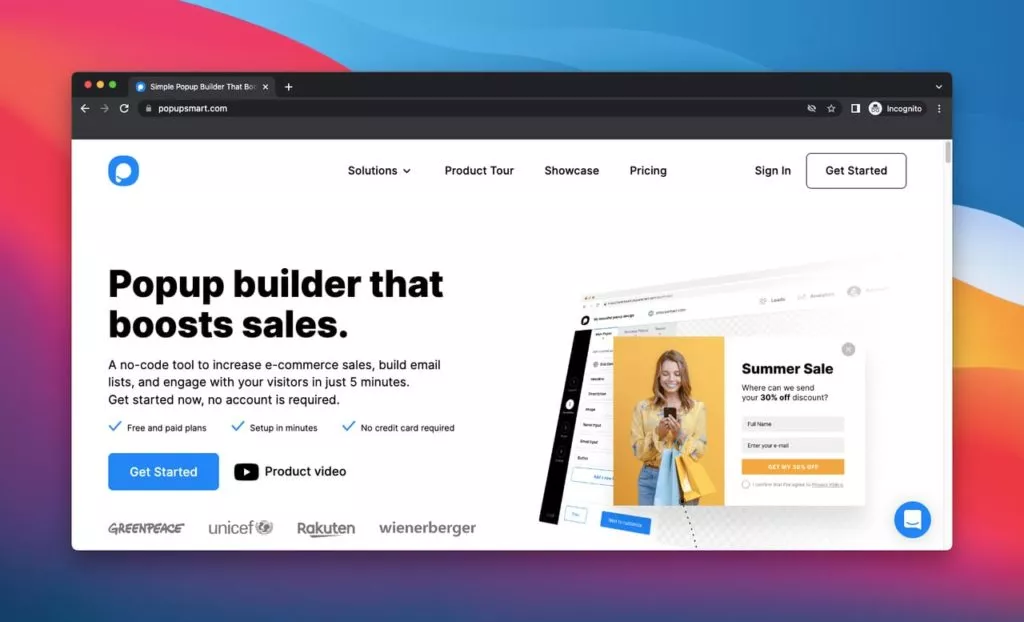
Popupsmart stands out as a dynamic and innovative no-code popup builder, empowering businesses to redefine their online engagement strategies. With a mission to enhance user interaction, Popupsmart provides a feature-rich platform for creating visually appealing and highly functional popups. Whether the goal is to boost sales conversions, grow email lists, or promote products, Popupsmart offers a versatile solution designed to cater to diverse business needs. The platform’s ready-to-use and customizable popup layouts, coupled with advanced targeting features like exit-intent, geo-location, and scroll triggers, enable businesses to precisely tailor their outreach. Moreover, Popupsmart’s incorporation of smart tags facilitates the display of dynamic texts, ensuring personalized and effective marketing campaigns.
Pros:
- Versatile Functionality: Popupsmart accommodates a range of popup purposes.
- Ready-to-Use Layouts: Businesses can choose from a variety of customizable layouts.
- Behavioral Targeting: Advanced features enable precise targeting based on user behavior.
- Dynamic Texts: Smart tags allow the creation of dynamic, personalized content.
Cons:
- Multilanguage Limitations.
- A/B Testing Absence.
- Free Plan Limitations.
Pricing: Popupsmart offers a free plan with limitations. Paid plans start from $24/month.
G2 Rating: Popupsmart boasts a G2 rating of 4.4/5, reflecting its positive reception among users.
2. HubSpot Sales Hub:
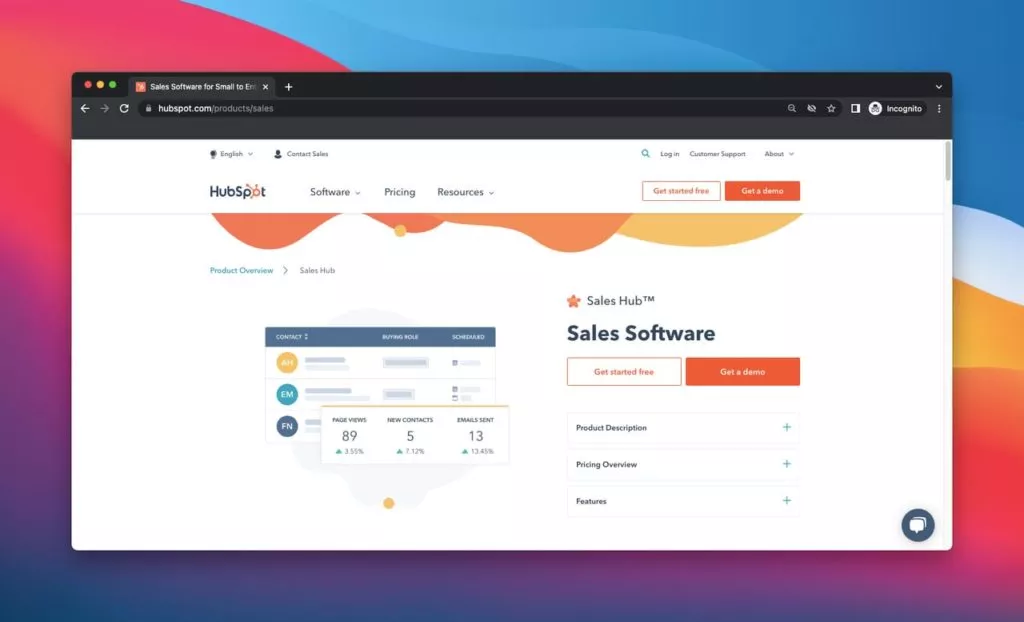
HubSpot Sales Hub emerges as a leading CRM solution equipped with a suite of sales engagement tools, robust reporting capabilities, and analytics features. Recognized for its user-friendly interface, HubSpot Sales Hub plays a pivotal role in empowering businesses to analyze conversion rates, streamline sales funnels, and engage with a broader customer base. The platform’s marketing automation features facilitate seamless email marketing, campaign management, and lead management. Offering comprehensive contact and account management, task management, and desktop integration, HubSpot Sales Hub provides a holistic solution for businesses aiming to refine their sales strategies and enhance conversion rates. Social collaboration features, coupled with robust mobile user support, further contribute to effective customer acquisition and relationship management. Additionally, the platform allows businesses to manage customer success workflows seamlessly.
Pros:
- User-Friendly Interface: HubSpot Sales Hub boasts an intuitive and user-friendly design.
- Marketing Automation: Advanced features for email marketing and lead management.
- Comprehensive Management: Efficient handling of contact and account management, task management, and desktop integration.
- Social Collaboration: Encourages collaboration with mobile support.
- Customer Success Workflows: Seamless management from acquisition to retention.
Cons:
- Professional Plan Cost.
- Workflow Sensitivity.
- Merging Contacts Requires Improvement.
Pricing: HubSpot Sales Hub offers a free plan, with paid plans starting from $45/month.
G2 Rating: HubSpot Sales Hub holds a G2 rating of 4.4/5, reflecting positive feedback from users.
3. SureTriggers:
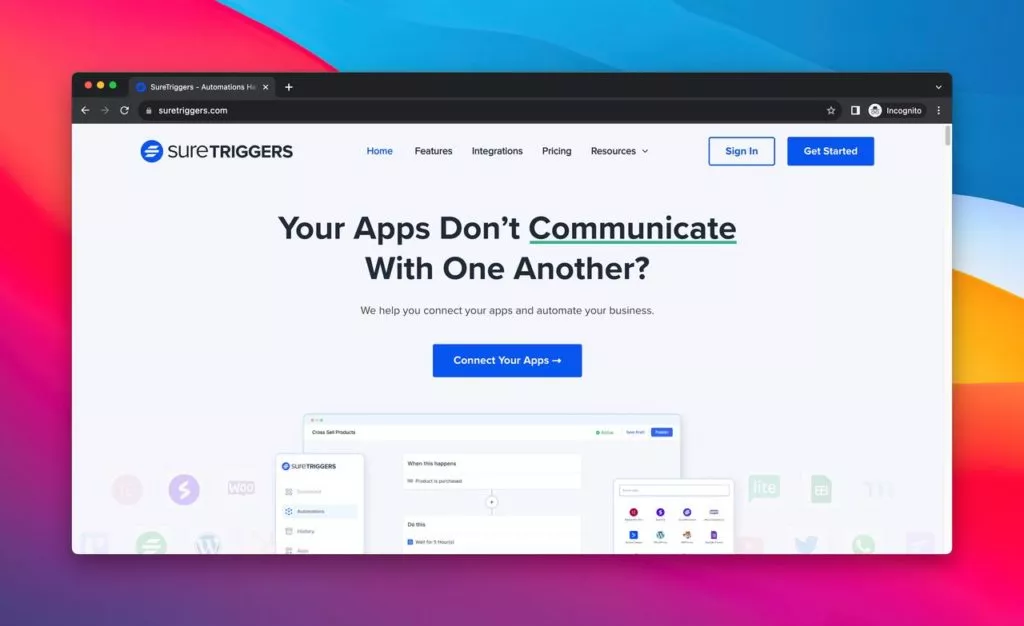
SureTriggers positions itself as a versatile automation platform, providing a compelling alternative to existing solutions like Zapier. With a commitment to seamless integration, the platform facilitates the effortless connection of various applications, offering users the flexibility to integrate their preferred apps effortlessly. SureTriggers plays a pivotal role in enhancing new customer acquisition strategies by empowering businesses to deliver personalized messages and tailored experiences to potential customers.
Pros:
- Facilitates targeted and personalized messaging, boosting engagement and conversion.
- Automated triggers ensure timely follow-ups, nurturing leads throughout the customer journey.
- Captures and analyzes crucial customer data for improved lead qualification.
- Integrates with diverse marketing channels such as email, social media, and CRM for multi-channel campaigns.
Cons:
- Limited app integrations, with new additions on a weekly basis.
- Learning curve for those new to automation.
- Extensive features may appear overwhelming initially.
Pricing: SureTriggers offers a lifetime free plan with 1000 initial tasks. Three plans include Free, Pro, and Agency, with pricing based on specific task requirements.
G2 Rating: SureTriggers boasts a G2 rating of 4.5/5, reflecting positive user feedback.
Learn about funnel builder solutions here.
4. Drift:
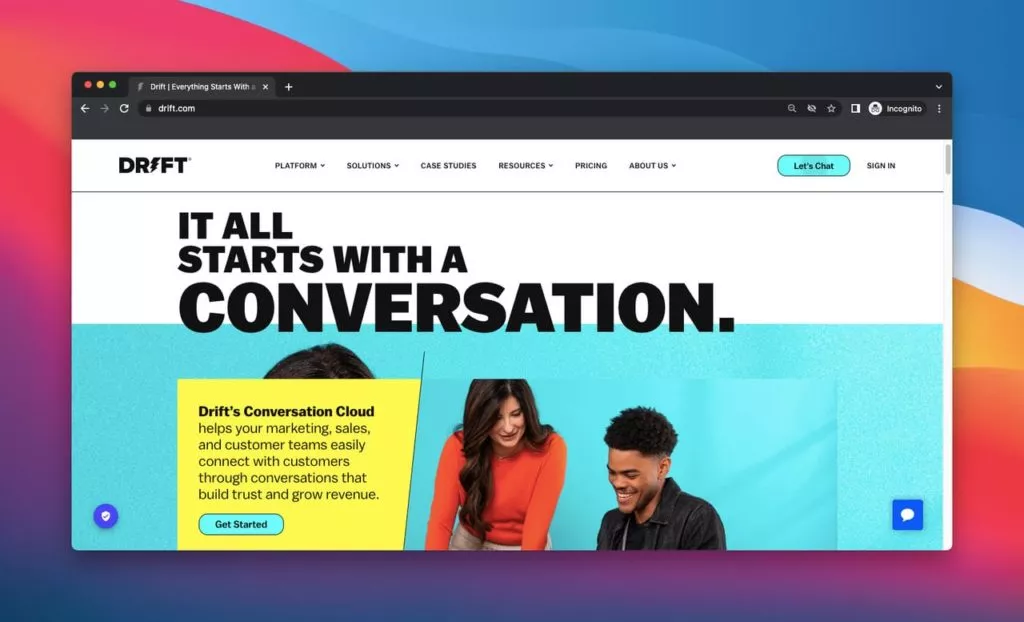
Drift emerges as a cutting-edge customer acquisition software designed to foster connections with customers and visitors. Leveraging the AI-powered Conversation Cloud, Drift empowers businesses to elevate their customer acquisition strategies significantly. The platform offers a suite of features contributing to effective marketing and sales strategies, including customer prospecting, visitor intelligence, real-time personalization, automated customer support, and custom chatbots.
Pros:
- Customer prospecting aids in prioritizing essential accounts for outreach.
- Visitor intelligence and real-time personalization provide valuable customer insights.
- Automation of customer support and custom chatbots enhances customer satisfaction.
- Robust lead gathering and customer profiles facilitate audience analysis.
Cons:
- Learning curve for optimal utilization.
- Improvement needed in data integration and extraction.
- Abundance of features may be overwhelming for beginners.
Pricing: Drift offers a free trial, with Premium, Advanced, and Enterprise plans available. Pricing details for these plans can be obtained by contacting the Drift sales team.
G2 Rating: Drift holds a G2 rating of 4.3/5, showcasing positive user sentiments.
5. ReferralCandy:
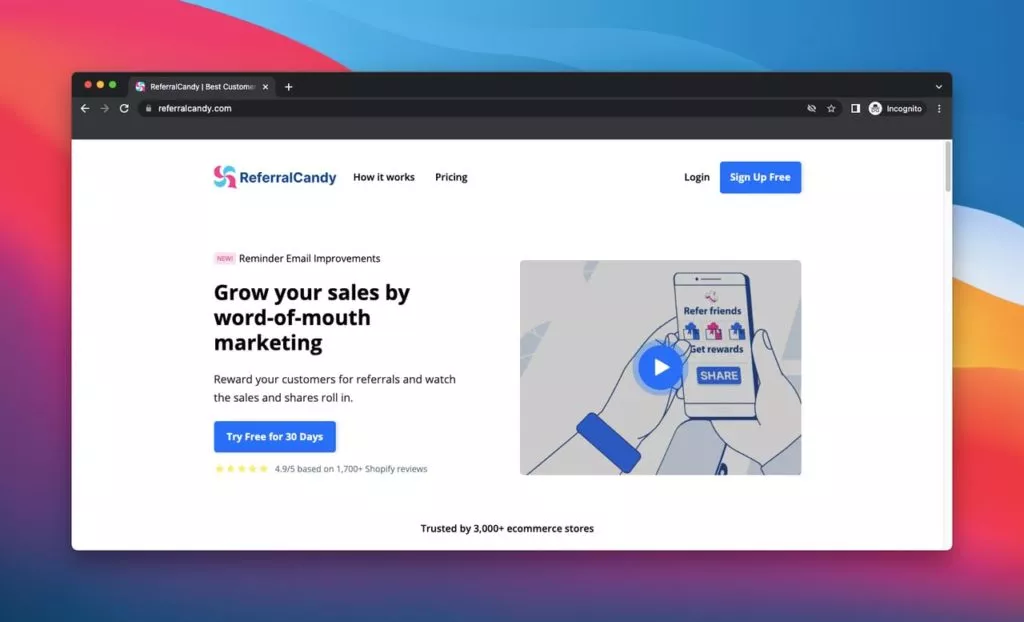
ReferralCandy establishes itself as a robust referral and customer acquisition software tailored to meet the needs of businesses. Focused on automating referral programs and analyzing results, ReferralCandy offers an easy-to-use platform seamlessly integrating with popular e-commerce stores such as Shopify, WooCommerce, BigCommerce, Magento, and ReCharge.
Pros:
- User-friendly platform designed for e-commerce stores.
- Seamless integration with major e-commerce platforms.
- Flexible reward options, including percentage discounts, dollar discounts, cash, and custom gifts.
- Addition of referral widgets, signup forms, and post-purchase popups for increased conversions.
Cons:
- Limited to one referral program per account.
- Integration challenges with certain platforms.
- Limited filtering options that need improvement.
Pricing: ReferralCandy offers Premium starting from $39/month and Plus from $239/month. Enterprise pricing details can be obtained by contacting the sales team.
G2 Rating: ReferralCandy holds a G2 rating of 4.4/5, reflecting positive user feedback.
6. Unbounce:
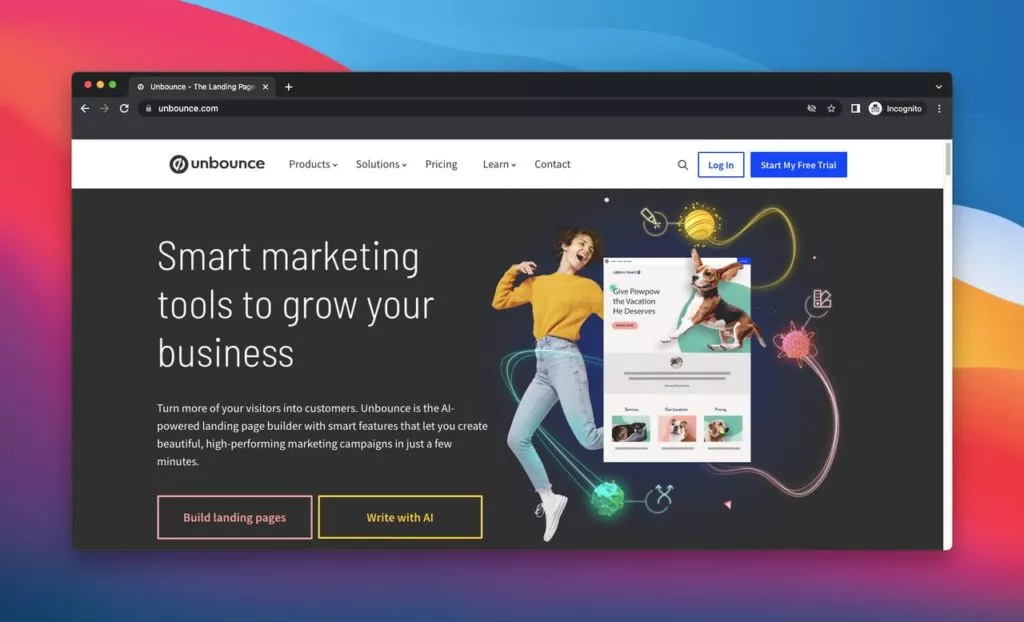
Unbounce harnesses the power of AI to assist businesses in creating conversion-ready landing pages and connecting effectively with visitors. Suited for diverse sectors, including e-commerce, SaaS, agencies, small businesses, and professional services, Unbounce prioritizes user-friendly solutions that optimize landing page performance.
Pros:
- Integration with various CRM tools and email marketing software.
- A/B testing features embedded in campaigns.
- Optimization for mobile responsiveness and SEO friendliness.
- Customizable templates for streamlined web presence creation.
Cons:
- Challenges in customizing certain landing page elements.
- Testing process improvement needed for percentage calculations.
- Tracking conversions may require the use of custom codes, posing complexity.
Pricing: Unbounce offers Launch from $81/month, Optimize from $122/month, and Accelerate from $203/month. Pricing is tiered based on conversions and visitor limits.
G2 Rating: Unbounce holds a G2 rating of 4.4/5, reflecting user satisfaction.
7. Mailchimp:
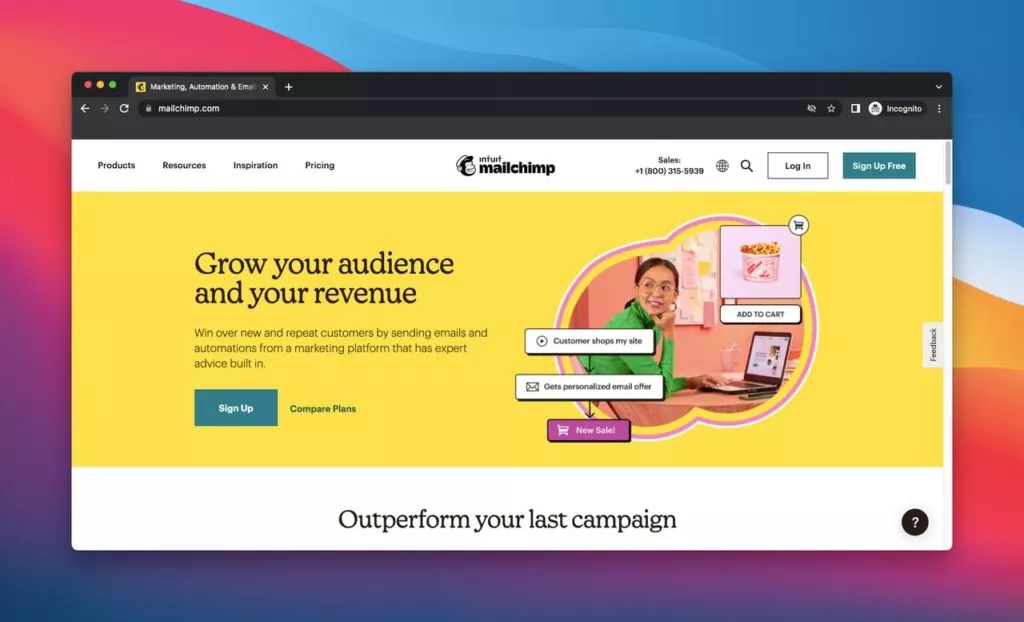
Mailchimp, established as a leading marketing platform, has solidified its position by offering all-encompassing solutions to businesses seeking a unified marketing approach. With an array of sophisticated features, Mailchimp provides users with the tools to not only manage their audience effectively but also to automate marketing processes, analyze campaigns comprehensively, and unleash their creative potential. From content creation to A/B testing and detailed reporting, Mailchimp caters to diverse marketing needs.
Pros:
- Audience management and marketing automation for precise targeting.
- Insights and analytics solutions for comprehensive campaign analysis.
- Creative tools like content studio, dynamic content, templates, and creative assistant.
- Inclusion of A/B testing, surveys, reports, and content optimizer features.
Cons:
- Learning curve for beginners; adapting to the platform takes time.
- Limitations in layouts and image galleries requiring improvement.
- Free plan limitations, and the unlimited plan may incur higher costs.
Pricing: Mailchimp offers a free plan with limited features. The essentials plan starts from $11/month, and the standard plan starts from $17/month. Premium plan details vary based on contact numbers.
G2 Rating: With a G2 rating of 4.3/5, Mailchimp stands as a highly rated platform reflecting user satisfaction.
8. Wunderkind:

Wunderkind distinguishes itself as a performance marketing and customer acquisition tool that places a premium on enhancing the visitor experience. Tailored specifically for retailers, publishers, and travel companies, Wunderkind’s multichannel marketing solutions offer real-time messaging features, audience development tools, and consumer marketing solutions. Automated, one-to-one emails further solidify its commitment to driving meaningful results and converting potential customers into loyal patrons.
Pros:
- Real-time messaging features for improved customer service.
- Audience development solutions for capturing emails and reaching the target audience.
- Consumer marketing solutions to convert potential customers into loyal ones.
- Automated, one-to-one emails for enhanced conversion.
Cons:
- Overwhelming reporting features requiring adaptation.
- Limited updates and improvements, lacking certain features.
- SMS marketing features in need of improvement.
Pricing: For Wunderkind’s pricing details, users can contact the sales team.
G2 Rating: Wunderkind maintains an impressive G2 rating of 4.7/5, showcasing high user satisfaction.
9. LiveChat:
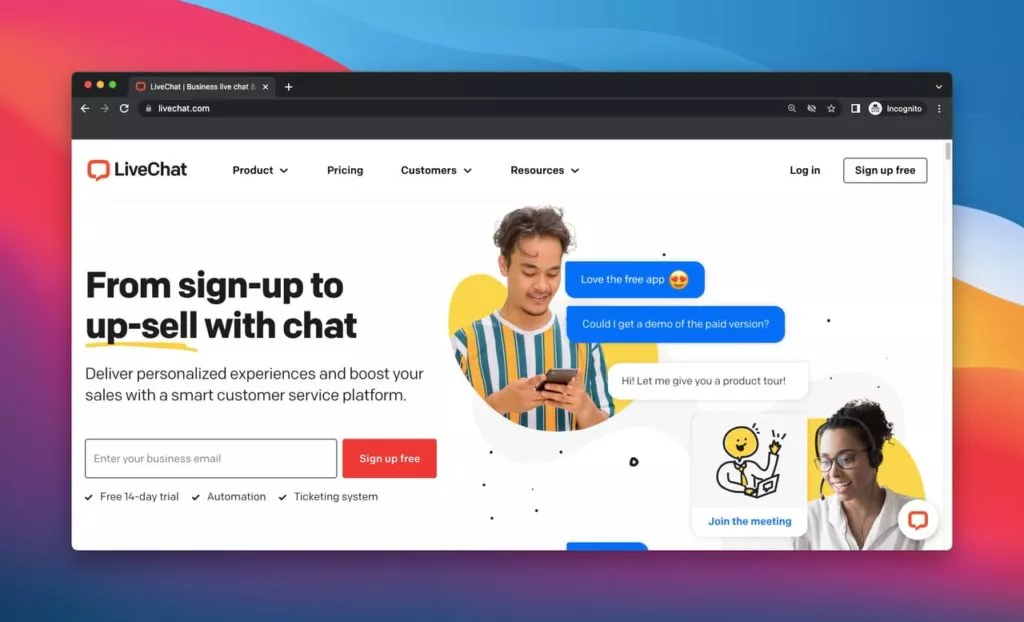
LiveChat emerges as a pivotal tool in the realm of help desk solutions, facilitating direct interaction with visitors to improve customer service swiftly. With a robust set of features including file sharing, chat archives, and customer engagement tools, LiveChat goes beyond the basics to provide users with a comprehensive solution for customer interaction and support. Features like ecommerce reports, customizable chat widgets, and detailed analysis tools contribute to its effectiveness.
Pros:
- Various chat tools, including file sharing, chat archives, chat tags, and chat ratings.
- Customer engagement tools like targeted messages, messaging modes, eye-catchers, and chat transcripts.
- Ecommerce reports, customer reports, data summaries, and chat reports for interaction analysis.
- Customizable chat widget with features like agent profiles, accessibility, languages, and chat boosters.
Cons:
- Improvement needed in automation features.
- Challenges in deleting chats when a person leaves.
- Occasional glitches requiring time for updates and recovery.
Pricing: LiveChat offers a starter plan from $16/month for small offices, a team plan from $33/month for full-time support teams, and a business plan from $50/month for customer service departments. Enterprise plan details can be obtained by contacting LiveChat’s sales team.
G2 Rating: LiveChat holds a G2 rating of 4.5/5, indicative of high user satisfaction.
10. ProProfs Chat:
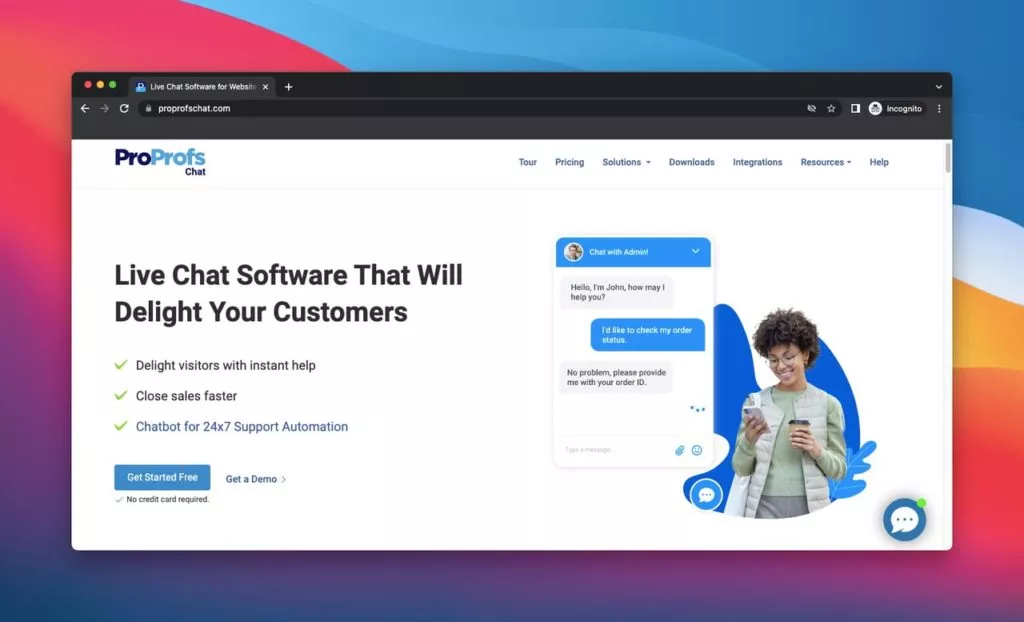
ProProfs Chat positions itself as a live chat tool designed to enhance the practicality of the customer service experience. Through the incorporation of chatbot technology and features like 24/7 support, ProProfs Chat aims to improve help desk interactions. With a focus on identifying visitor intents, automating support requests, and providing features like pre-chat forms and chat history, it offers a comprehensive solution for businesses aiming to streamline their customer support.
Pros:
- Utilization of chatbots for human-like interactions and 24/7 support.
- Identification of visitor intents before chat initiation for improved team performance.
- Automation of support requests and practical chat transfers to relevant departments.
- Helpful features like pre-chat forms and chat history for quick visitor interaction.
Cons:
- Limited customization options in the dashboard.
- Reports section lacking detailed insights requiring improvement.
- Occasional delays in response time.
Pricing: ProProfs Chat offers a 15-day free trial. The essentials plan starts from $10/month, and the premium plan starts from $15/month. Pricing details may vary based on the operator number, and information on enterprise plans can be obtained from the sales team.
G2 Rating: ProProfs Chat holds a G2 rating of 4.5/5, reflecting high user satisfaction.
Tips for Enhancing Your Customer Acquisition Strategy
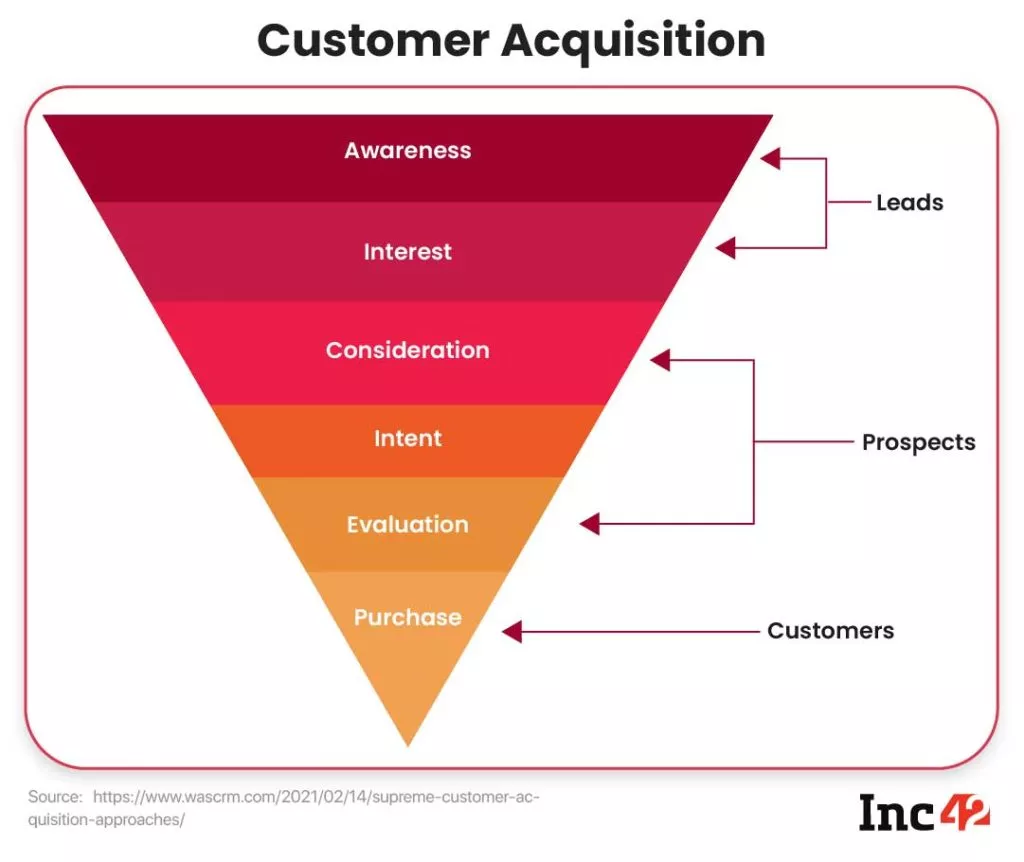
- Product Design and User-Friendly Experience: Ensure your product is well-designed and user-friendly to create a positive customer impression.
- Mobile Optimization: Optimize your website for mobile devices, recognizing the increasing use of smartphones for online interactions.
- Audience Understanding: Get acquainted with your target audience; speak their language, address their needs, and align with their interests.
- Irresistible Offers: Craft compelling offers and discounts for new customers, fostering loyalty from the outset.
- Exceptional Customer Service: Provide outstanding customer service on your website, actively solving issues to enhance overall customer experience.
- Clear Call-to-Action: Implement clear and compelling call-to-action words and buttons on your website for seamless navigation.
- Campaign Analysis: Regularly analyze your marketing campaigns, scrutinizing results to refine and optimize your strategies.
Conclusion:
Building an effective customer acquisition strategy is crucial, and these tips can serve as a foundation for success. Don’t forget to refer to our comprehensive guide, “16 Steps of Customer Acquisition Process for Digital Marketers,” for a detailed roadmap.
Embark on creating your unique customer acquisition strategy using the diverse tools highlighted in this post. Implementing these insights and tips will set you apart from competitors and contribute to your business’s success.
FAQs on Customer Acquisition Tools:
What are the main sources of customer acquisition?
The primary sources of customer acquisition include direct marketing (email, advertisements), paid advertising, content marketing, social media advertising, search engine optimization (SEO), and referral marketing.
What CRM tools are used for customer acquisition?
CRM tools such as HubSpot, Salesforce, and Zendesk are widely used for customer acquisition. They help businesses track customer interactions, preferences, and facilitate targeted marketing strategies.
What are customer acquisition channels?
Customer acquisition channels encompass various methods to attract and convert customers. Examples include social media ads, influencer and affiliate marketing, direct mail campaigns, and search engine marketing (SEM). These channels play a crucial role in reaching and engaging new customers.



